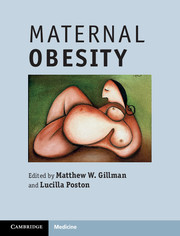Book contents
- Frontmatter
- Contents
- Contributors
- Preface
- Section 1 Trends and determinants of obesity in women of reproductive age
- 1 Demography of obesity
- 2 Determinants of obesity
- 3 Obesity and fertility
- Section 2 Pregnancy outcome
- Section 3 Long-term consequences
- Section 4 Interventions
- Section 5 Management and policy
- Index
- Plate Section
- References
1 - Demography of obesity
from Section 1 - Trends and determinants of obesity in women of reproductive age
Published online by Cambridge University Press: 05 August 2012
- Frontmatter
- Contents
- Contributors
- Preface
- Section 1 Trends and determinants of obesity in women of reproductive age
- 1 Demography of obesity
- 2 Determinants of obesity
- 3 Obesity and fertility
- Section 2 Pregnancy outcome
- Section 3 Long-term consequences
- Section 4 Interventions
- Section 5 Management and policy
- Index
- Plate Section
- References
Summary
Introduction
According to the World Health Organization (WHO), overweight and obesity are defined as abnormal or excessive fat accumulation that may impair health [1]. Overweight and obesity are usually diagnosed when weight normalized for height, or body mass index (BMI: weight in kilograms divided by the square of the height in meters, kg/m2), exceeds a defined threshold. In 1995, the WHO proposed a BMI classification for adults as a form of diagnosing excess adiposity [2]. According to this classification, individuals are considered overweight when their BMI is ≥25; those between 25 and 29.9 are designated as pre-obese and they are classified as obese when their BMI reaches or exceeds 30kg/m2 (Table 1.1). Many authors also use the term “overweight” to designate pre-obese individuals (BMI 25–29.9), which gives rise to some confusion, unless the specific range of BMI is specified. Although BMI does not directly measure the percentage of body fat, it offers a more accurate assessment of excess adiposity than weight alone. Due to its simplicity, BMI categorization is the preferred obesity measurement for clinicians, public health specialists, and researchers, and is currently used worldwide to track adult overweight and obesity prevalence [3].
- Type
- Chapter
- Information
- Maternal Obesity , pp. 1 - 7Publisher: Cambridge University PressPrint publication year: 2012

